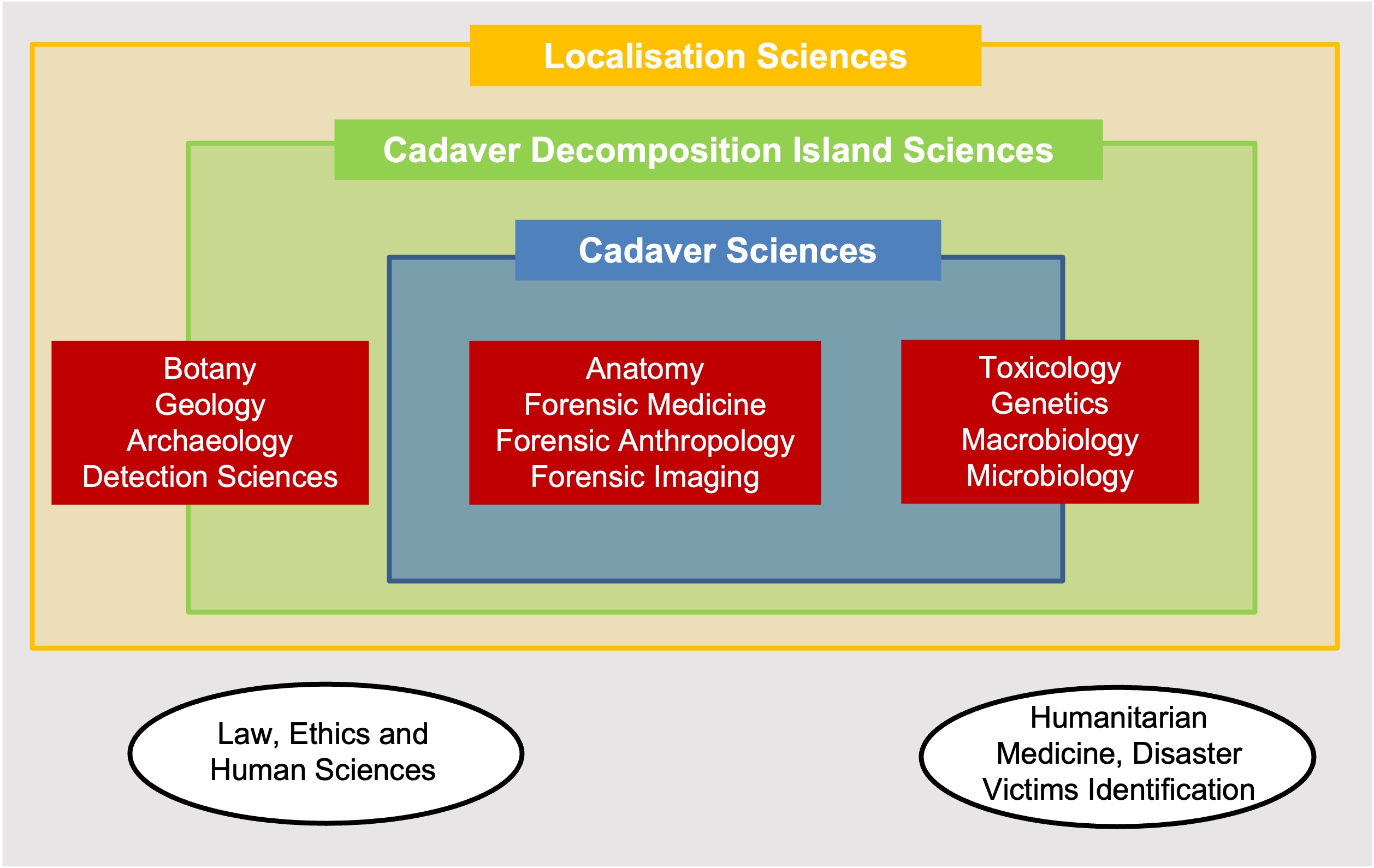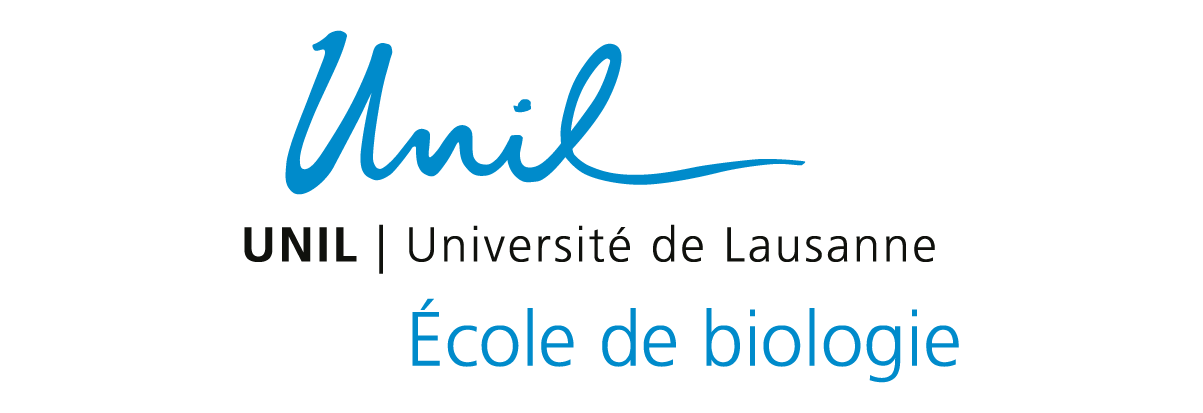
Introduction to Master in Human Taphonomy
Human Taphonomy focuses on the biological, ethical and environmental challenges associated with the decomposition of human bodies, including public health risks.
The Master in Human Taphonomy addresses these issues through interdisciplinary work using forensic, humanitarian and sociocultural approaches.
Specialised lectures and practical lessons are given by a variety of national and international experts.
The topics will be illustrated by practical demonstrations, visits and hands-on courses, one of them dedicated to real exhumations.
The programme includes individual research as well as group work, and ensures the acquisition of transferable skills in addition to specialised knowledge.
It is designed for students with a background in Medicine, Biology, Forensic Sciences or similar, and with experience surrounding the dead human body.
In short, this Master's programme offers:
- Study of human anatomy; thanatopraxy, thanatology and taphonomy through the ages; archaeology and geolocation; forensic and humanitarian sciences.
- Specific classes and methodologies on communication about human taphonomy.
- A six month-long Master research project allowing students to shape their own specialisation.
Definition
The term « taphonomy » first appeared in the context of paleontology in 1940. While studying the processes involved in decay and preservation of organic matter after death, the scientist Ivan Efremov combined the Greek words taphos and nomos, meaning « grave / burial » and « law », respectively. Consequently, taphonomy is the scientific discipline focusing on the decomposition of organic material, from cessation of vital functions (death) to fossilisation and discovery of remains.

Human taphonomy must be understood as concentric spatial volumes, which are carefully investigated from the body itself to the surrounding environment. It includes the human cadaver and cadaver sciences, environmental sciences and the study of the Cadaver Decomposition Island (CDI, i.e., the direct surroundings impacted by the decomposing body and its fluids), and localisation sciences.
Beyond this tridimensional structure of techniques, human taphonomy must take into consideration the specific judicial, ethical and social context regulating the study of human bodies. These contextual aspects must be respected at all times, even when additional operational emergencies are necessary (e.g., humanitarian cases, disasters).
Applications
Forensic human taphonomy aims at identifying and documenting cause and circumstances of human death as well as estimating postmortem delay. It stands as a multidisciplinary forensic science based on the analysis of the cadaver, and its direct surrounding environment.
Humanitarian human taphonomy aims at identifying and documenting cause and circumstances in which death occurred for a group of individuals. It encompasses forensic human taphonomy and takes into account the ethical, legal, sociocultural, geopolitical and historical specificities of each event or disaster.
General human taphonomy aims at understanding and solving problems caused by dead bodies and their decomposition beyond forensic or humanitarian contexts. This may include anything from traditional archaeology to current environmental and professional challenges in funerary situations (funeral care, cemetery management, new sepultures, etc.).
At the end of the Master of Science (MSc) studies in Human Taphonomy (hereafter Master), students will be able to:
- Use scientific knowledge and creativity to solve scientific problems in human taphonomy.
- Answer fundamental or applied questions on human taphonomy in the context of legal, public health, humanities and environmental issues.
- Observe and learn, both theoretically and experimentally, and adapt to new information.
- Identify relevant data in the context of specific situations by mobilising the concepts inherent in the different fields of general and forensic human taphonomy.
- Evaluate the detection, collection, analysis and interpretation of human taphonomic data in specific situations, within legal and ethical constraints in a multicultural context.
- Analyse various types of data obtained either from their own research or from the scientific literature, to integrate and synthesise them.
- Handle, analyse and synthesise bibliographic resources (databases, scientific journals etc.), during the design and implementation of a scientific project.
- Critically appraise their own and others’ scientific methods, results and conclusions.
- Engage in scientific discussions and problem solving.
- Organise and manage their work and projects individually and in a team, including being proactive in using key resources.
- Communicate about science orally and in writing (seminars, posters, written reports and scientific articles).
- Defend a project in front of experts and explain its broader societal relevance.
- Be fluent in written and oral scientific English.
Graduates will acquire specialised knowledge as well as a variety of transversal skills. Amongst other things, they will be able to:
- Identify past and present problems related to dead bodies (historical and archaeological approaches, pandemics management, development of medical devices, etc.);
- Improve handling of dead bodies taking into account religious, spiritual and cultural representations;
- Understand the mechanisms driving organic decomposition and identify environmental challenges related to the decay of human bodies (contamination and remediation);
- Locate, document and analyse human remains in a specific sociocultural, humanitarian or forensic context;
- Identify and document cause and circumstances of death, and estimate postmortem delay;
- Manage human bodies considering ethical, cultural, legal and humanitarian aspects (anthropic and natural disasters);
- Communicate in the field of human taphonomy and react appropriately in the context of death and related taboos.
This programme serves as a foundation for potential careers in:
- Academic research
- Hospitals and forensic environments
- Museums and cultural sectors
- Police and security forces
- Environmental industry
- Biomedical and biotechnology sectors
- Medical laboratories
- International (non) governmental organisations
Uniscope podcast episode (12.02.2024):
La mort dévoilée par la science de la décomposition des corps humains
No player? Click on the image to download the mp3!
Click here for the full article linked to the podcast (article in french)
Partners
Lectures and practical lessons are given on-site and through distance learning, by a variety of specialists from UNIL, CHUV and Unisanté, as well as international experts based in Canada, USA, Germany, United Kingdom, France, Italy and Australia amongst others.
For this Master, the University of Lausanne collaborates with the Swiss Institute of Forensic Taphonomy (SHIFT) of the University Center of Legal Medicine (CURML).
© Microgen © Palilinganjames © david morrison | Dreamstime
Prof. Vincent Varlet
Centre universitaire romand de médecine légale (CURML)
Head of the Master HT
Tel. +41 21 314 38 42
email: vincent.varlet@chuv.ch




![Master_Taphonomie_mai23-FINAL[1686].pdf](/files/live/sites/eb-ht/files/Flyer.jpg)